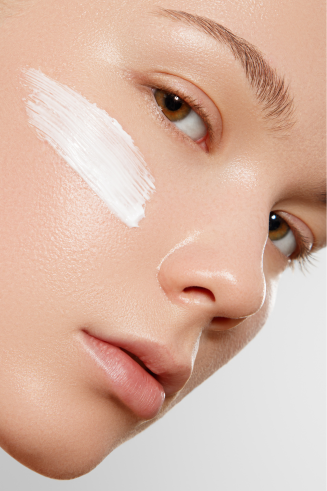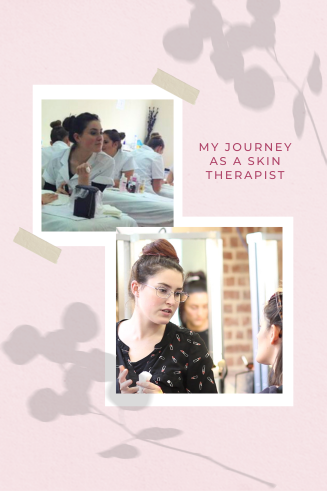The Impact of Skin Disruptions on Our Self-Confidence and Social Interactions
Our face is one of the primary ways we communicate with others. A smile, a frown, a furrowed brow - all of these expressions convey emotions and thoughts to those around us. But did you know that the quality of our skin can impact how readable our faces are? Just like a picture, our faces can be “read” by others, and anything that disrupts the clarity and “seamlessness” of our skin can make us less readable, impacting many aspects of our life… some which you might even not have considered before.
Why Skin Quality Matters for Face Readability
When I say “skin quality,” I am referring to things like texture, tone, and overall health.
A bumpy, uneven skin that shows dark undereye circles, blotchiness, or discoloration can be more difficult for a person who meets you to read than skin that is smooth, even-toned, … “undisturbed. ”
This is because our brains are wired to process faces in a certain way, and any disruptions to that process can make it harder for us to trust the person and interpret the emotions and thoughts being conveyed accurately.
We all read people subconsciously. When travelling, a smile is a pretty universal welcoming sign. A frowny face conveys the opposite message. The same way that we read expressions, we read skin. This is something that is very well known in the way people are showcased on screen… let me walk you through this.
The Role of Skin Disruptions in Creating Memorable Characters
You all know that people on TV wear makeup. It used to be one of the only situations men could wear some, without consequences. When TV first appeared, a lot was lost on camera so features were enhanced to still show up on the audience’s screen. As technology improved, quality of the image improved, and so did the makeup.
The concept of “face readability” is used in the entertainment industry in absolutely everything you watch, from the smallest budget to the multi-million one, on screen or on stage.. Added features or disruptions to the skin, whether they are subtle or not, are impactful. Common examples are lines, scars, visible veins, age spots, sores, wart, extra hair, no hair, more or less eyebrows… You’ve seen them hundreds of times, you know what I am referring to.
They add depth and complexity, credibility and substance to the characters while also highlighting the harsh realities of the fictional world(s) said characters inhabit.
This notion also comforts us; it reassures us that nobody is innately bad, but that “turning bad” is a result of one’s environment, which is reflected into the character’s features.
Every time, it is used to serve the purpose of the storyline of the character. (yes, we will get back to real life soon, just bear with me!)
Think about iconic characters like Benjamin Button, his age isn’t always stated, yet we clearly see that he’s becoming younger because that is a trait of young skin. Young skin is smooth and undisrupted, seeing a baby with elderly skin is startling. This is not to say that ageing is wrong, it is a part of life and a good thing. This is just saying that as smooth as a baby’s skin has meaning because it is true, in most instances.
Another example is Bilbo Baggins. Bilbo is an endearing character. He’s Frodo’s uncle. Yet, when he tries to grab the ring from Frodo’s neck in Rivendell, all the veins, colours, and lines that have been added to that specific scene, including making his eye rims darker and the white of the eye redder,…showcase how being the owner of the One Ring has impacted him, turning some part of him… evil.
We know, usually instantly, when a character on screen is healthy or sick or if they are “good” or “bad”. And sometimes, they surprise us.
Usually, small disruptive features have been used in many clever ways, like they did in Nanny Mcphee where each wart or “imperfection” on Emma Thompson represents a lesson for the children to learn and the more they learn their lessons, the more Nanny Mcphee appears kind and beautiful… because the wart and oversized tooth have gone. Her face is more readable, the less scary she appears and the more “lovable” she becomes to the audience.
Across every single media, today’s society makes certain to ingrain that even further in our children. Photoshop in advertisements has made this even more prevalent with the ability to erase lines, wrinkles as well as pores! As good to know, everyone has pores and everyone has a skin texture and makeup does enhance the texture of the skin, it is just the way it is. Anything showcasing skin without texture has a filter.
When it comes to representations of evil in cartoons, there are countless examples. The use of exaggerated features and dark colors is often used to signal that a character is up to no good. Overall, the use of distinct facial features to create memorable and impactful characters is a common technique in movies and TV shows.
Whether it’s a hero, a villain, or something in between, the face is often the key to making a character memorable and engaging. In a nutshell, together, all these codes put in place by the entertainment industry, upholded by the media, create the lens through which we perceive life. (Unrelated to this specific article but this is EXACTLY WHY inclusivity matters in every media!)
Now.. where does this come from and how does it translate back to real life? Because we do not live in a movie you ask. Well it comes down to…
The History of Skin and Infectious Diseases
The basis of these codes is the concept that our skin can reveal important information about our health and well-being and even our wealth, which can be traced back to human epidemiology and human history. Throughout history, the standard for skin tone has evolved. Porcelain skin was in vogue and only wealthy individuals had the luxury to stay inside, thus protecting their skin when others were working outside and thus… tanning.
In the early 2000s being tanned was the golden standard and you had to be able to afford fake tanning or tanning salons. But more importantly, infectious diseases have been a major threat to human health, and many of these diseases left marks on the skin that could be used to diagnose and track their spread.
For example, smallpox was a highly contagious disease that caused a distinctive rash on the skin. This rash could be used to identify individuals who had been infected and track the spread of the disease through communities. Similarly, the bubonic plague, which caused the infamous “black death” pandemic in the 14th century, left distinctive skin lesions that helped doctors diagnose the disease and track its progression.
Other infectious diseases, such as tuberculosis and leprosy, also left marks on the skin that could be used for diagnosis and treatment. In some cases, these diseases were stigmatized, and individuals with visible skin lesions were ostracized from their communities. This is human instinct so we can survive these highly transmissible/contagious diseases.
Today, we have a much better understanding of infectious diseases and how they spread, and many of these can be prevented or treated with modern medicine. Although the past few years have brought this fear back to the forefront the idea that our skin can reveal important information about our health and well-being remains relevant.
Resources for Improving Skin Quality and Overall Well-Being
A great resource for understanding the importance of skin health and how it impacts our overall wellbeing is “Clean: The New Science of Skin and the Beauty of Doing Less” by James Hamblin. I loved this book, such a refreshing take on the beauty industry, facials and other skin “habits” that individuals have.
The book also touches on the social and cultural factors that influence our attitudes towards skin health, including the pressure to conform to narrow beauty standards and the gendered expectations around skincare.Overall, “Clean” is a thought-provoking and informative read that challenges us to rethink our approach to skincare and prioritize the health of our skin over superficial beauty ideals… which, if you’ve ever had a chat with me in person is also where I stand.
As a skin therapist and makeup artist, I love that book. I always tell my clients that healthy and happy skin is the goal, not perfect skin. With healthy and happy skin, we can achieve outstanding skin readability with just the right, little amount of makeup. But the first step to beautiful makeup is happy skin, which for most people comes from a good, personalized skincare routine… most importantly, one that slots into their life. Skincare should fit in your life and you shouldn’t have to map your life around your skincare.
On an everyday basis, with my clients, I use my cinema and Special Effects makeup training. Not by designing characters, but by spotting, right away, what blurs the readability of your face and then I am showing simple ways for you how to enhance your features and your own skin, with skin that still breathes and looks like skin, usually starting with skincare.
For individuals who have just had major changes in their lives such as becoming a mother or going through perimenopause, the face disruptions are usually new and very much present. Being able to have a face that is easy to read is a unique way, almost an underestimated way of reclaiming their confidence and feeling empowered about their skin and appearance all over again, without giving in to the “be young forever” scheme that the media sell us on an everyday basis. That is a domain that I excel at with my clients.
Because… newsflash, you cannot stop time. I guide my local clients to healthy and happy skin with the Skin 101 package, while the Makeup 101 package (Coming up in April, reach out to me on IG if you want to know more!) teaches them the specific key makeup techniques for their own faces.
If you are not local, my online course “A Journey Back To You” is for you. It offers options for both skin and makeup and will pave the way to your happy, healthy, and readable skin.(Get a sneak-peak by downloading your 5-minute skincare template here)
Improve the superficial to allow for consequential change. Chase your dreams and allow your self confidence to soar by changing that which seems inconsequential now. Pave the way to happy, healthy, readable skin
NB: I have never heard of anybody else calling this concept the “Face readability” but it feels fitting so I am running with it.







